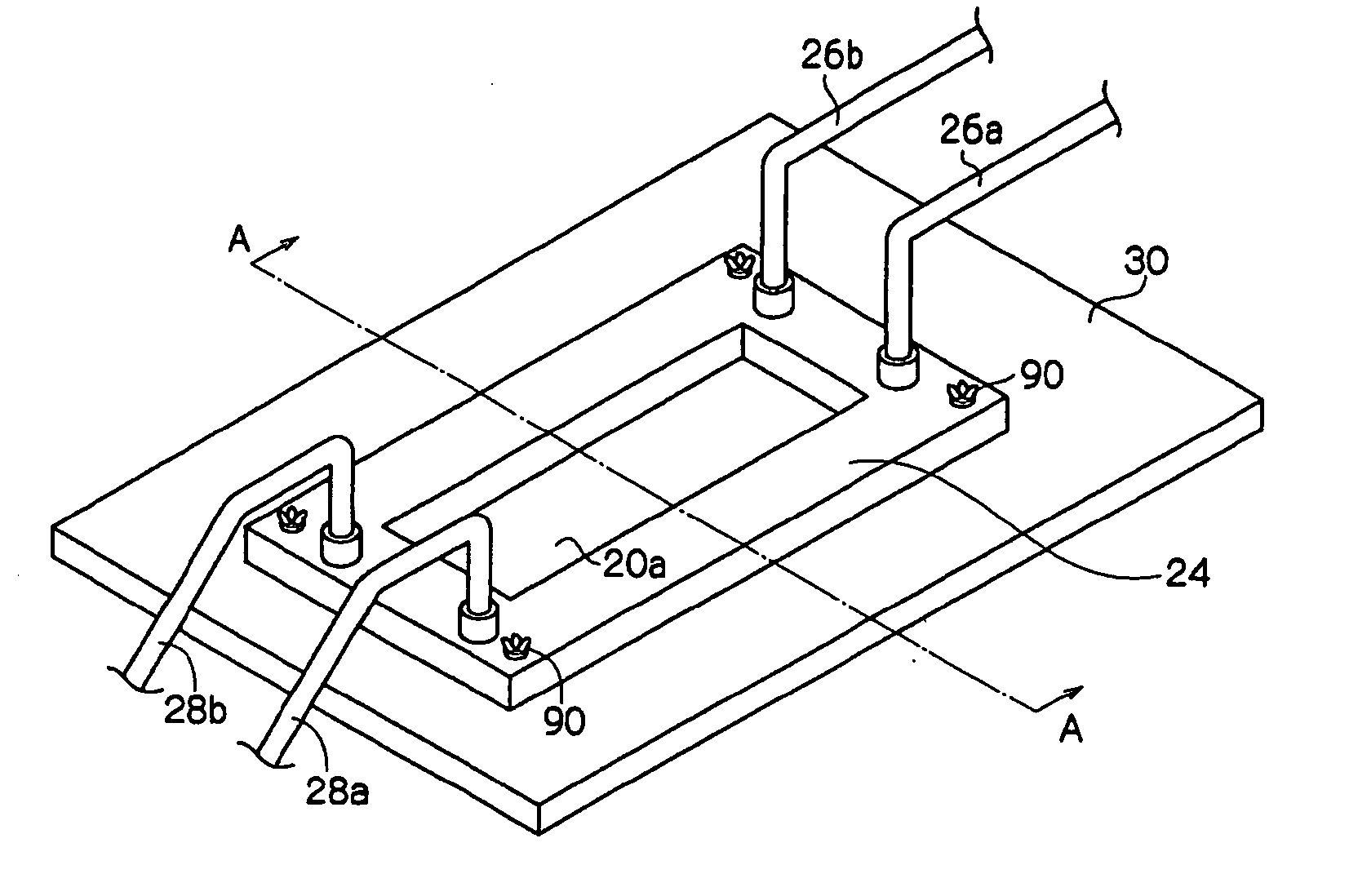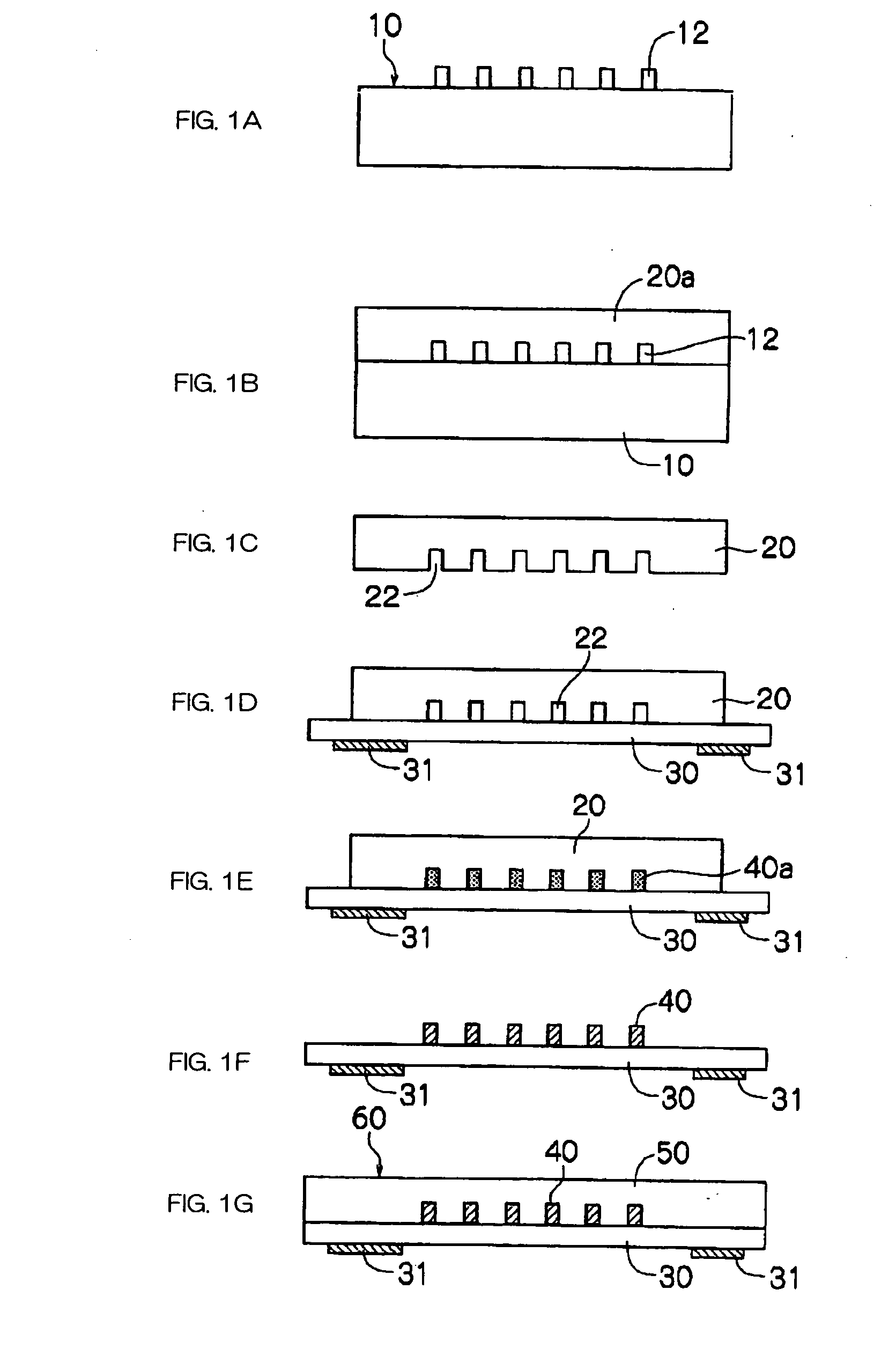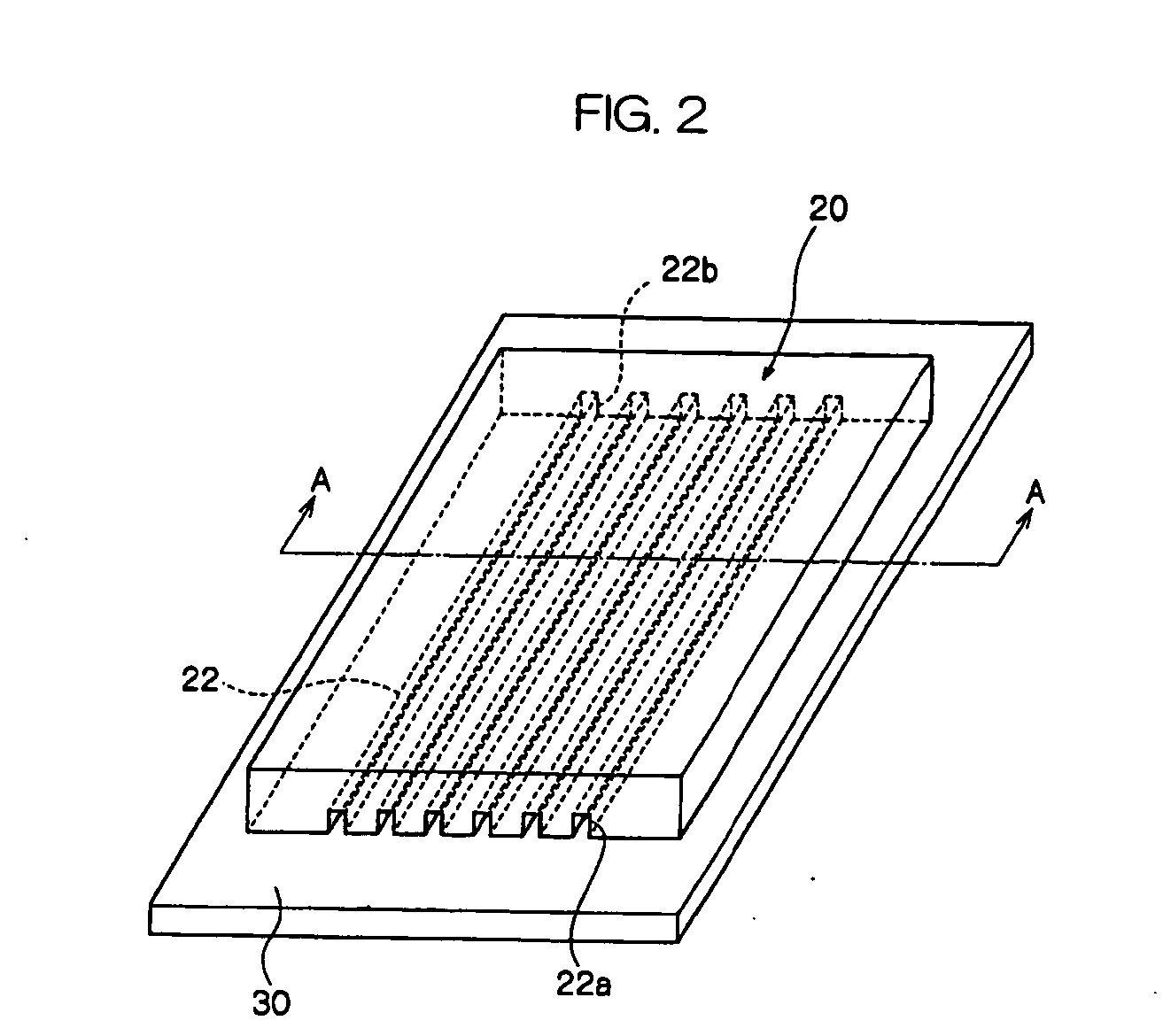Method for fabricating polymer optical waveguide device
a technology of optical waveguides and polymers, applied in the direction of optical waveguide light guides, instruments, domestic applications, etc., can solve the problems of increasing production costs, affecting the accuracy of the resultant core diameter, and bonding films together, and achieves low light loss, high functional optical circuit base materials, and simple fabrication.
- Summary
- Abstract
- Description
- Claims
- Application Information
AI Technical Summary
Benefits of technology
Problems solved by technology
Method used
Image
Examples
example 1
Production of a Mold
[0152] An ultraviolet ray curing thick film resist (trade name: SU-8, manufactured by Micro Chemical Inc.) is applied to the surface of a quartz base material by spin coating and the resulting material is pre-baked in a heating oven. Five convex portions (width: 50 μm, height: 50 μm, pitch: 250 μm, length: 50 mm) made of an ultraviolet ray cured polymer material having the cross-section of a square are patterned on the material by a photolithographic process to fabricate a matrix for the production of a mold.
[0153] Next, an opening portion through which ultraviolet rays are transmitted is provided as shown in FIG. 4A, and a reinforcing member (made of aluminum strip having a thickness of 1.5 mm) having three injection ports and three discharge ports is prepared, and then five concave portions (width: 100 μm, height: 100 μm, pitch: 500 μm, length: 50 mm) having a shape similar to the concave portions correspondent to the above-described convex portions are prod...
example 2
[0161] A polymer optical waveguide is fabricated as in Example 1 with the exception that the hardness of the cured resin layer as the mold is 80 in terms of shore A hardness. In addition, the hardness of the silicone rubber material, the cured resin layer, is adjusted by the amount of a ceramic ultra fine powder that is added to the aforementioned liquid dimethylsiloxane rubber.
[0162] Of the five resulting core portions, the mean wave guide loss of three optical waveguide core portions is 1.8 dB / cm; no optical guide waves can be confirmed for the other two.
[0163] Next, a groove is produced in the waveguide base material as in Example 1 and a wavelength selecting optical filter is bonded thereto. The result is that the loss of light after wavelength selection in the three core portions that have confirmed the aforementioned optical guide waves is 5.9 dB.
example 3
[0164] A polymer optical waveguide is fabricated as in Example 1 with the exception that the hardness of the cured resin layer as the mold is 30 in terms of shore A hardness. The mean guide wave loss of the polymer optical waveguide is 0.15 dB / cm.
[0165] Next, a groove having a mean width of 1.15 mm is formed to a length of 20 mm on the waveguide base material so as to cut the core portions, at an angle of 45 degrees relative to the waveguide base material surface, as shown in FIGS. 7B and 7C, by dicing by means of a dicer apparatus having a dicer blade of a thickness of 1.0 mm. Then, into this groove a wavelength selecting optical filter with a thickness of 0.5 mm that reflects light having a wavelength of 1.3 μm and transmits light having a wavelength of 0.85 μm is inserted, and the optical filter is positioned in such a way that the maximum void width between the cut core portion ends and the optical pathway portions of the wavelength selecting optical filter is 0.90 mm (mean voi...
PUM
| Property | Measurement | Unit |
|---|---|---|
| length | aaaaa | aaaaa |
| mean roughness | aaaaa | aaaaa |
| void width | aaaaa | aaaaa |
Abstract
Description
Claims
Application Information
 Login to View More
Login to View More - R&D
- Intellectual Property
- Life Sciences
- Materials
- Tech Scout
- Unparalleled Data Quality
- Higher Quality Content
- 60% Fewer Hallucinations
Browse by: Latest US Patents, China's latest patents, Technical Efficacy Thesaurus, Application Domain, Technology Topic, Popular Technical Reports.
© 2025 PatSnap. All rights reserved.Legal|Privacy policy|Modern Slavery Act Transparency Statement|Sitemap|About US| Contact US: help@patsnap.com



